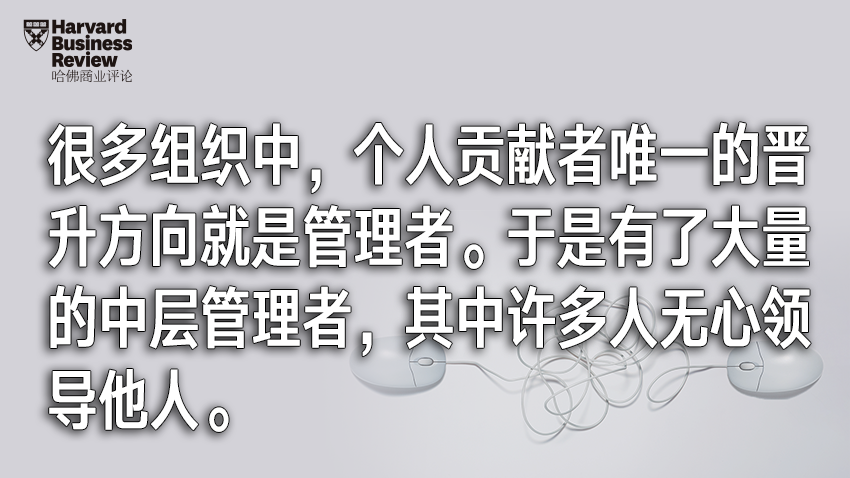Remote work is becoming more and more common, and the strategies of middle managers are also changing.
Editor’s note: This article is from the WeChat public account “Harvard Business Review” (ID: hbrchinese), author: HBR-China.
Said Little Buddha
For decades, middle managers have been “human routers”: tracking project progress, passing information within the team, and acting as a medium of communication between junior employees and senior leaders. Now that remote work is becoming more and more common, the strategies of middle managers are also changing. If they can properly use tools to manage remote work teams, middle managers will be able to improve efficiency and reduce pressure, thereby focusing their energy on maintaining the team and cultivating talents.
The switch to remote work has affected each of us, but the challenges that middle-level leaders faced in the past year were extremely difficult. A questionnaire survey involving more than 3000 remote knowledge-based employees around the world found that middle managers (defined as managers who manage 1-6 employees) have a lower job satisfaction than senior managers (manage at least 15 employees) 46 %, the difficulty in maintaining a sense of belonging among employees is at least twice that of executives, and they feel more pressured and less efficient.
There is undoubtedly the impact of stress caused by the epidemic, which is a temporary response to stress, but the data shows that several factors that increase the stress level of middle managers and decrease job satisfaction may continue. Especially the situation where the organization’s workforce is more dispersed has continued for a long time. The traditional duties of middle managers—supervising employees’ efficient work and optimizing personal performance—have become more and more redundant in three important aspects.
1. The traditional nine-to-five model is gradually eliminated. In the past default nine-to-five, in-person work mode, managers supervise the team and can truly walk into the office to communicate with employees. However, the situation in the epidemic shows that flexible and asynchronous work schedules are conducive to better achieving work-life balance, reducing stress levels, and improving work efficiency. Many organizations have permanently bid farewell to the traditional nine-to-five model. In this new normal, managers must still play an important role in cultivating talents and maintaining team cohesion, but the past management methods of “walking into the office” are no longer effective. The task of managers now is to design operational specifications and workflows specifically for teams that do not rely on real-time face-to-face communication-many organizations are not ready to provide support in this area.
Second, digital infrastructure gradually replaces physical offices. In the past, a large part of the responsibilities of middle managers was to provide support for the communication and cooperation of employees, otherwise the team may have difficulty sharing information effectively. But now, communication has moved from conference rooms to digital channels, and file filing and sharing of key information and decision-making have become much simpler. Transparency is greatly improved, but it also makes many information sharing mechanisms within the scope of middle management’s responsibilities unnecessary.
Three, measuring output has become easier, but establishing common goals is even more difficult. Because team members are scattered, maintaining team cohesion—establishing and maintaining strong social connections, pursuing the same mission and vision—is more difficult than ever. The ability to communicate clearly and to assemble teams remotely becomes crucial. At the same time, switching to digital communication tools greatly simplifies tracking and measuring output. This series of changes means that the traditional management method of “command and control” is no longer necessary, and in many cases it will also affect work efficiency.
From router to leader
Fortunately, middle managers also have an important responsibility-just need to adjust. For decades, middle managers have been human routers: tracking project progress, passing information within the team, and acting as a medium of communication between junior employees and senior leaders. Communication in remote work is more difficult, but the strategy of managing communication has changed.
Managers do not need to act as a “router” to deliver information in person, but should find and use digital tools that can assist and replace humans. The most frequently mentioned source of stress in our research is “spending a lot of time tracking the workload of others.” If you can properly use tools to manage remote work teams, managers will be able to improve efficiency and reduce stress, so that they can focus on maintaining the team and cultivating talents.
To achieve such a transformation, middle managers and senior managers must relax their control over the flow of information and accept a culture of openness as the default state, that is, what information to share in the team is not determined by middle managers. Managers must adapt to the stricter review and accountability of employees, but employees also need to autonomously understand the current situation and make faster and better decisions.
Management should not be the only direction for promotion
Of course, middle managers are not in a vacuum. For managers to be successful, organizations must rethink what kind of person is suitable for middle managers, and what is the career development path of middle managers in the digital environment.
In many organizations, the only promotion for individual contributors is managers. So there are a large number of middle-level managers, many of whom are unwilling to lead others. And the limited training resources must be shared by many employees who want to make progress in their careers, Some of them may not be suitable to be the managers the organization needs, or are not interested at all.
To solve this problem, organizations must start from two aspects:
First, most of the “routing” work is handled by digital tools, and middle managers should pay attention to more important tasks, such as enhancing team cohesion, cultivating a sense of belonging to the team, and cultivating talents. This requires investment in the development of managerial communication skills, tolerance and mentoring capabilities, as well as reducing the total number of middle-level managers in order to concentrate resources and cultivate a small and sophisticated team of leaders.
Second, companies must create other career development paths for professionals, and provide promotions and salary increases based on their professional abilities and achievements, and do not require them to become managers. Many people are ambitious but not interested in management. Providing attractive development paths for these people is vital to their growth and job satisfaction, and it can ensure that those who become middle managers are willing to take on the corresponding work.
For example, Slack has two equally important leadership development paths: the expert path and the team development path. Employees who choose the expert route can be promoted to the vice president level based on their professional and technical capabilities alone, without having to turn their attention to managing others, developing the team, and OKR (Goals and Key Results) work methods. Those who choose the team’s development route have both professional technical skills and interest in management, and have the necessary management capabilities: explain the mission and goals to the team, eliminate obstacles and allocate resources, and guide and train employees.
Middle managers are often used to cover up problematic work procedures, and key tasks rely on personal institutional memory rather than sustainable processes. Bridging these procedural gaps requires the use of digital tools to allow people to concentrate on what they do best-professional technical work or personnel management.
There are many related studies on how to solve the problems of middle managers. Just looking at the titles of the published books, it has gone from “Praise the Middle Managers” to “Why Middle Managers Are So Tired” to “The End of Middle Managers”. The rapid shift to remote decentralized work last year made life more difficult for middle managers-but it also created a unique opportunity for us to rethink the meaning of management positions in the new digital world.
Digital tools make the flow of information freer and more democratic, eliminating the need for managers who only pass information between the upper and lower levels of the company. Middle levelManagers are free from uploading and dispatching chores and focus on more important tasks: Maintain team cohesion, this is the true lifeblood of the organization.
Keywords: Organization Management
Brian Elliott|Text
Shuojian|Translation Zhou Qiang|Editor

